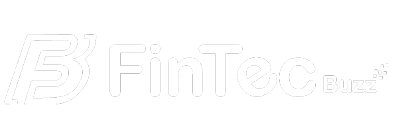In an increasingly interconnected global economy fed by international supply chains, the buying and selling of goods and services increasingly is configured, priced, quoted and sold through digital channels. But when it comes to B2B payments, the process comes to a screeching digital halt. In fact, the global B2B payments market is estimated to be $125 trillion dollars and yet only 7% of that is conducted digitally, according to Manhattan Venture Research.
The Perfect Storm
Finance teams are relegated to manual processing of invoices – which can cost $12-$30 per invoice in the U.S. and closer to $50-$60 per invoice for international payments. And incredibly, almost half of B2B payments are still made by paper check.
Combining a macro economic environment defined by higher interest rates combined with companies increasingly looking to digitize and modernize both their accounts payable (AP) and accounts receivable (AR) operations – it presents an interesting opportunity for fintech innovation.
Traditionally, B2B payments involve complex processes, paper invoices, and long payment cycles, leading to inefficiencies and delays. Furthermore, in the past, companies buying goods or services would take advantage of rebates offered by suppliers to pay early and get a discount, in today’s high interest environment its forced finance teams to conserve cash and shift strategies.
Commercial Cards Emerge
Enter commercial cards – a credit card or virtual card used by businesses to make purchases. Purchases may include business supplies, maintenance, repairs, operational expenses, travel or other items. A card program helps businesses manage their expenses by centralizing all charges made by their employees in a single place, increasing their visibility and control over their total spend. Businesses can also streamline their payment processes, reduce costs, and optimize cash flow management. These are two main reasons why more and more companies are looking to commercial cards as their default AP payment method.
And in fact, commercial cards benefit both sides of B2B transactions – suppliers receive timely digital payments that help shorten their ‘days sales outstanding’ (DSO) to improve their working capital while buyers leverage the float on commercial cards to retain more of their cash on hand. This “shared value” approach also means that the market is moving more towards an equitable sharing of the commercial card transaction cost between buyers and sellers instead of sellers paying the full amount.
Fintech Leads the Way
Fintechs are stepping in to help with this automation to connect buyers, sellers and card issuers to facilitate B2B payments securely and on a global scale. For buyers, they can use their commercial card for all expenses, even when a supplier does not accept them. For suppliers, they get optimized pricing, automation and security in accepting commercial cards. And for issuers, it enables them to grow their card base and spend. These B2B payment platforms also offer other innovations to maximize financial flexibility, including offering payments where buyers use a commercial card, but the supplier receives revenue from an account transfer.
In addition, as buyers take advantage of an increasingly global supply chain, there are challenges to the price of cross-border commercial card payments. Once again, B2B fintechs are developing solutions to mitigate this through proprietary interchange rates, buyer-funded models and card-to-account transfers that actively lower the cost of international B2B transactions while retaining the benefit of consolidated card spend. With a consistent payment cost regardless of payee or geographic location, it will significantly automate manual and expensive payment processes.
As businesses continue to evolve in a rapidly changing marketplace, the need for innovative payment solutions becomes increasingly important. Commercial card B2B payments not only meet this need but also set a new standard for efficiency and convenience in the industry. In the end, commercial transactions are an important cog in the world economy. The key fintech trends of treasury automation, virtual card adoption, and the financial advantages of commercial cards are reshaping the way businesses around the world make B2B payments.
Stay Ahead of the Financial Curve with Our Latest Fintech News Updates!

Seth Goodman, Chief Revenue Officer at Boost Payment Solutions
Seth Goodman is the Chief Revenue Officer at Boost Payment Solutions and has more than 25 years of experience in financial services and banking, including senior roles at Citibank, Goldman Sachs and WebBank. At Boost, he oversees the B2B payment leader’s global sales team supporting clients including 51 of the Fortune 100 across 44 countries.



